Surinder Singh: the purpose of yoga is to become a good human being
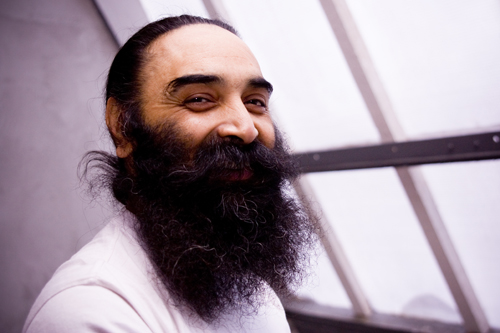
If you were in Rishikesh at least once, you definitely must have heard about Surinder Singh. He is one of the best-known hatha yoga teachers here who is particularly reputed for his heart-centered approach to students, brilliant adjustments, kind nature and philosophical touch. In this interview, Surinder Ji shares with TopYogis his views about the purpose of yoga and how to move towards it. You will also find out about one simple and most efficient technique of yoga practiced by all the old masters and the rishis, how yoga teachers can help their students feel inspired to create more freedom and transform their energy, and what to know when you're just starting your yoga practice.
TopYogis: Surinder Ji, how did your yoga journey start?
Surinder Singh: My yoga journey started because of prarabdha. Prarabdha means what I am carrying from my previous life - and from my family background. Also, being in India, it’s in our blood. Not only in Indians. Actually, if you see, yoga is how we connect to ourselves from inside, this is our true nature. So yoga knowledge helps us to find our true nature. So, if you have such a good prarabdha, if you have such a good family background, you’re coming from this culture, and of course being an Indian, somehow it’s reflected in our lifestyle. So I’m really thankful to God because I am Indian and I was born in India.
In such a good environment.
Of course, this is very important. Everyone has such a wonderful seed, and that seed can grow only when we find such a good environment. That’s why I feel very lucky because I grew in this culture, good environment, family background, society, how they pushed me and developed me in this field.
For how long have you been teaching yoga?
Teaching - for around 15-16 years I am on this yoga journey.
Can you tell us a little bit about your teachers that you studied with?
I joined yoga for the purpose of reducing my pressure and tension. I am a mechanical engineer, and I was working in the company, so I wanted to reduce my stress, and I joined yoga. And somehow as everyone jump in yoga, they jump into the asanas class. And I also did so, like other people. I was quite good, because I am also from sports background, so for me to perform all the asanas was quite easy. But when I started my practice, it gave me lots of energy. Of course, asana practice gives you more power. And that energy increased my ego level. When that increased my ego level, I immediately started to think that something was wrong in my practice, some part of yoga practice I am missing. I started walking on this path, studying more and understanding more about whole yoga practice, and that helped me to understand better that yoga is not only the physical part. The physical part is the first step. Asana is just one step, still we have a long journey to reach our goal.
And by the way, can you describe what the goal of your yoga practice is? Your personal goal.
Personally, I feel that yoga helps us become better human beings. This is the first. This is our evolution process. First, we learn to become a good human being. As we are trying to learn how to become a better human being, we continue on our path. Just striving to become a good human being, you automatically walk the path of the divine.
The first step - to make an effort towards becoming such a good human being. Even if you look Yamas and Niyamas, what is their purpose? If you remove them from yoga, then yoga becomes only physical exercise. So, the first step is important - how we become a good human being, and that helps us understand ourselves, understand others, create harmony in between us, and that helps us progress on our way towards the purpose - not only being a good human being but walking the path of the divine.
So, people who come to Rishikesh to practice yoga, how do they become better human beings, here? Is it through asana practice, or do they need to find a teacher who would explain other aspects?
Those who come to Rishikesh for the first time, need to understand something.
There is a lack of the knowledge in our education. We have education about how to earn money, how to fulfill all our desires, that knowledge helps us enjoy the world outside. But yoga is quite different, it helps us to enjoy inside. Once I have such a knowledge of how to enjoy inside, that knowledge will help me to enjoy outside to create the balance. Otherwise, if I have only one-sided knowledge, it creates an imbalance. That’s why today in our life we have a lot of fluctuations.
So as teachers, our duty is to give the right direction. Look you have so many things in your world, but inner knowledge is also very important. So, being a teacher, our duty is to share this knowledge. Once the students have this knowledge, first they have many questions, and slowly they get their answers. Then after, the knowledge does not only help you, you also need to know how to implement this knowledge in life, that will make a big difference. This is a slow process.
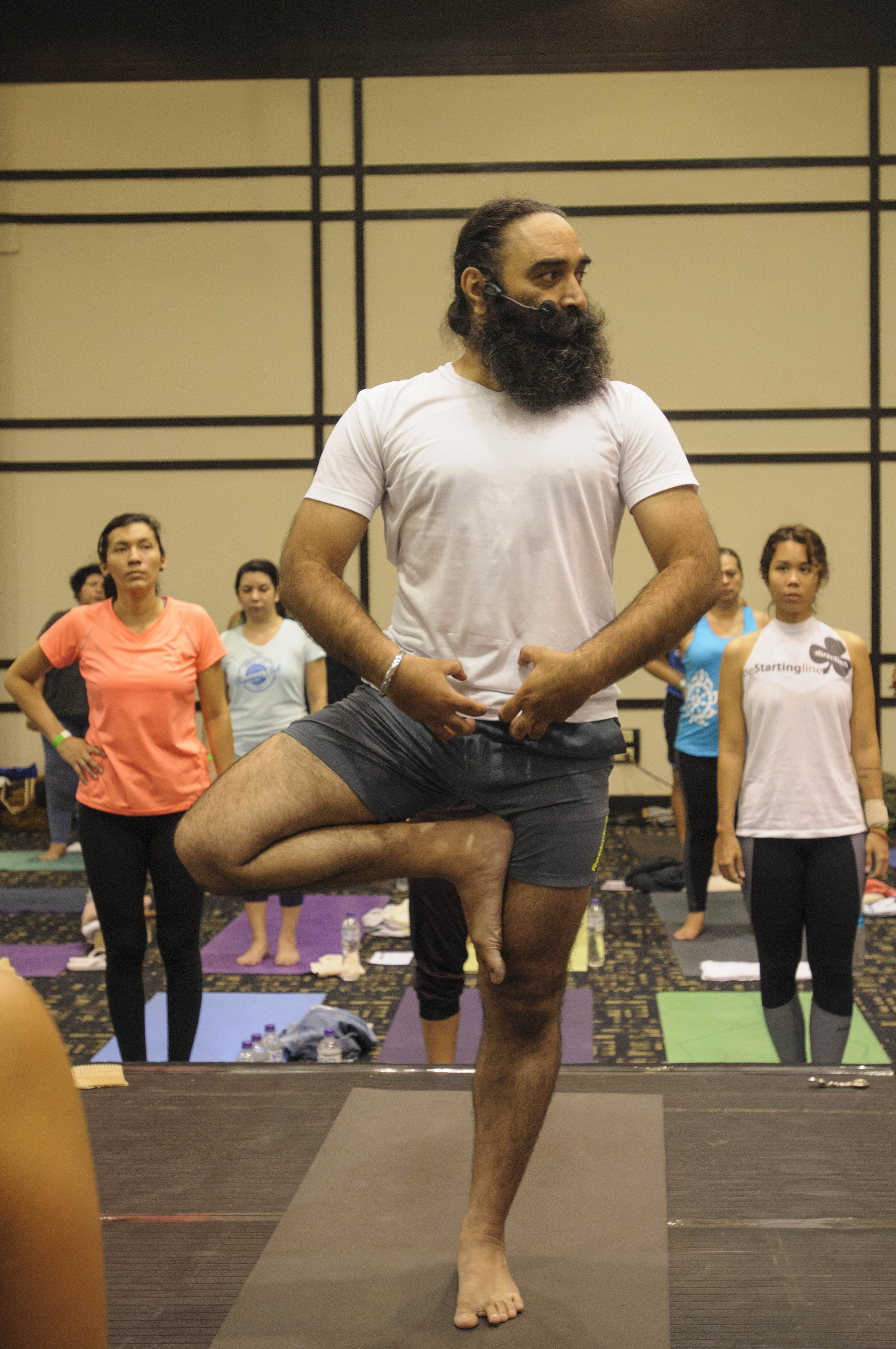 Some practitioners are interested in teachers' lives. For example, how teachers implement their practice in daily life: how they start their day, what kind of exercise they do personally. It inspires students to follow in the footsteps of teachers. Can you tell us a bit about your day?
Some practitioners are interested in teachers' lives. For example, how teachers implement their practice in daily life: how they start their day, what kind of exercise they do personally. It inspires students to follow in the footsteps of teachers. Can you tell us a bit about your day?
Exactly. You see, in ancient time, yoga was not a profession. Yoga was a mission. Still, yoga is the mission even now. So in ancient times, the teacher would not teach students. The students would keep eyes on the teacher and observe how he lives. Early in the morning, he goes for meditation, how he acts and interacts with the world. So they learn directly from the teacher. This is not a kind of education when you come here, and in 200 hours you are a yoga teacher. This (what we have now) is more information based. That (the ancient pattern) was not information based.
So yoga actually was working in the way that you kept the eyes on the teachers and observed how the teacher behaves. You would learn directly. That would not be like a course when a teacher does all the formalities and finish. Then, a teacher was also responsible, meaning, the teacher felt that if I hold your hand, this is my duty, I will help you. It does not matter in one month, one year, two years - it’s a long process. This is the duty of the teacher: he will give you the things you need according to your mental perception. He will always try to do his best. Now, yoga has become the profession.
Yes, and we can see that people come back to you every year for many years.
I am really thankful to those who come to me again and again and grateful to the Great Master, he gave such good things to me, now it is my duty to share with them.
Do you start your day in any particular way? Do you have any personal practice in the morning or evening?
Right now I am working less on the physical part, and I am practicing more and more pranayama and meditational part. Because now at this age it’s better to start making less movement. In yoga, we start our journey from the movement (the asana practice) to the moment (the meditation part). This is how the life is. At the beginning of the life, you start working with the movement and slowly become more and more subtle, in meditation. Now, asanas are becoming less and less, pranayamas are increasing more and meditation is becoming more longer.
And that helps you to keep your mind very calm and quiet. This is the purpose - to reach that level, not only asanas. Though yes, you make the asanas, this is very true - according to the ancient wisdom we have to do asanas, but not very aggressively. Because if you do very aggressively, your vata will increase. Because you are doing so much movement, your energy level is very high, and the vata will increase there. So better balance: we need some asanas practice, but it should be balanced with pranayama practice, practice of controlling the mind and a more subtle part of yoga.
So, I practice whenever I have the time, but I very much prefer to do my meditation.
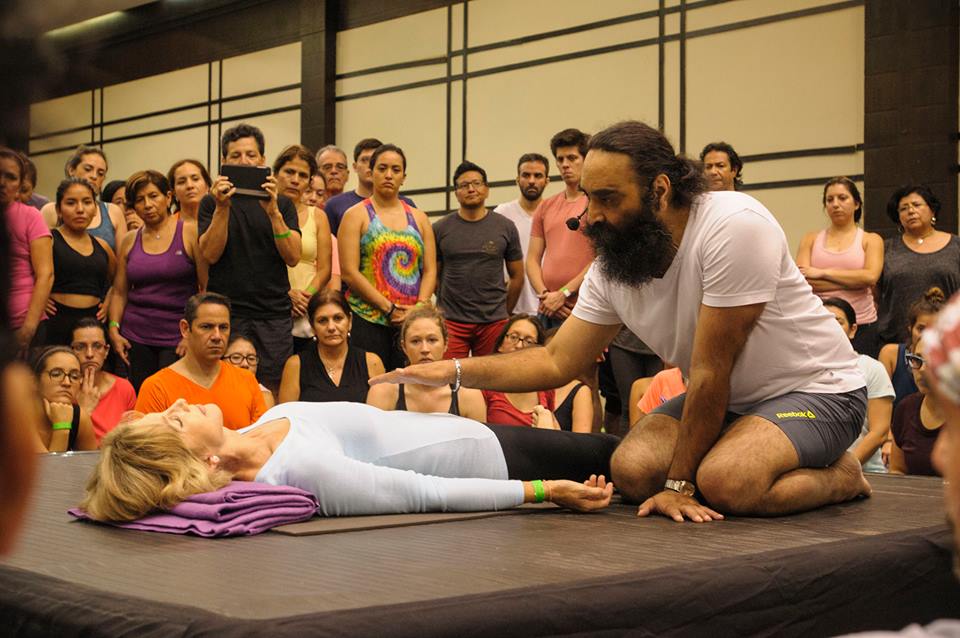
And do you have fixed time of practice, for how long do you do this meditation?
I usually wake up around four or 4:30, this is my morning time, this is for me, up to 5:30 or 6 o’clock. Then after I start to move, get busy with my yoga lessons and other activities. And at the end of the day, I have very short meditation once again. And the rest of the day I’m quite busy with running my program and doing all the activities, during the day I don’t have the time.
Surinder Ji, if in your class you have a person that cannot do some of the asanas, because of some physical limitation or a disease. Can you still say that they can be good yogis because they practice some other aspect of yoga?
Very good. It’s not that only if you can do the asanas, then only you become the yogi. Yoga does not mean that you have to explore this (physical) dimension of yoga. We have many kinds of yogas, karma yoga, bhakti yoga, jnana yoga. Yoga means - if you do the karma yoga, it should be unconditional. If you do the bhakti yoga, bhakti means the devotion, and we need to make harmony between all the people and connect with the universe. When you do jnana yoga, it’s the path of knowledge, but you should be able to share from your heart.
If people are not able to do the asanas, it’s OK. This (asana) is a channel - you choose which channel you want. The purpose of yoga - how to become a good human being. People who are very conscious about healthy body, they do asanas practice. The people who are conscious about pranayama practice, the breathing part - they will work on their energy level, pranayama, and that will lead in the end to the meditation part.
Normally, how much do we breathe? Only 500 ml. But we have a big capacity, big lungs - 6000 ml. If the people are conscious about that - they can make good pranayama. If someone does not work on their pranayama, if someone is happy about 1000 ml breathing capacity, but they are a good human being - then they are also yogi.
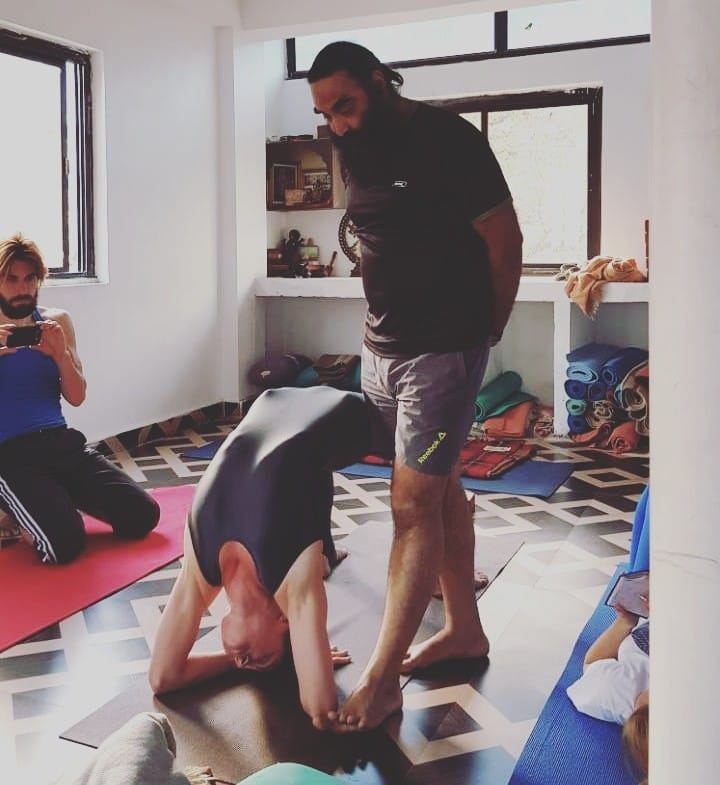 Yes, we go and find teachers that do practices, and on the outside, someone might think that this is not yoga, but then you start talking about different aspects of our being here, they say very similar things. And to us, this is all yoga as well.
Yes, we go and find teachers that do practices, and on the outside, someone might think that this is not yoga, but then you start talking about different aspects of our being here, they say very similar things. And to us, this is all yoga as well.
Yes. If the one person is running a chai shop outside, he is not practicing “yoga”, but how he behaves, how he welcomes others - he is also kind of yogi.
If a person was very busy and they asked you about what practice they can do in only 15 minutes a day, what would you recommend them to do?
It’s very simple. That practice will help you to discover yourself. I will only suggest to you one practice: you find a place where you can sit very comfortably, and you sit and start to observe your breath. Only observe your breath. The Universe is very wise. It made breath free of cost. Why did the Universe make the breath free of cost?
Because prana has two principles. The first principle is the life force, and the second principle is the consciousness. The breath is here, you start to observe your breath, and that observation will help you bring your mind deeper inside. This is very simple. And at the same time, it’s not such a big knowledge - all the great masters, all the rishis, how did they get insight into things? They closed the eyes and they started to turn the mind inside. They used the breath as a tool, they used the breath deep inside. And what happens - all the knowledge starts to come onto you.
This is a very simple technique. That’s why, wherever you go, first they say, observe your breath. Actually, in the beginning, we are only trying to observe the breath, and then we try to read the message behind the breath.
And what is the message?
Many messages, not only one, many messages are there. Breathing in - breath out.
Breath in means I welcome, I accept what comes to me. When your breath is inside, your enjoy with gratitude, appreciate. When your breath is outside, we have to be again thankful, because what does it mean? Nothing belongs to me, everything is impermanent.
So you just breathe in and breath out, but it gives you a big message, and our whole life we are holding, holding, catching and catching, we become more and more greedy. So that breath helps you, it opens you layer by layer. And this is the reason, our first body in anna maya kosh, and second body is prana maya kosh. Through the prana maya kosh we can discover the rest of all the bodies. Somehow this is called your prana sadhana. It means using prana I am meditating, I am working on how to go deep inside.
Surinder Ji, you are a very famous teacher in Rishikesh and outside Rishikesh, for your adjustments. For how you can look at the person and tell them just a few words, and right away they feel that their practice is different.
Look, this is again the grace of the great master, his blessing. That’s one thing. Second thing, because I’m mechanical engineer, so this is my nature - to see the body.
So you look from the mechanical point of view?
Yes. When you look then you can see: oh, OK, if I just lift from here and then slightly push from there, it gives you a good alignment and then you feel it in the body. So somehow this part is coming from my mechanical engineering background - how to look at the body, and second thing - how I am doing - I don’t know anything, cause this is again the blessing. I tell you honestly, because I never made any kind of big courses, because I was working in my company, so I had no opportunity, no chance to go to many teachers. And I am really thankful to all of you (students) because you are the best teachers for me, because I learn a lot from you. I am giving a lot of respect to you, because when I am looking at you, I am learning from you. So all of you, you are my best teachers.
What do you think about adjustments when a teacher uses force to change student’s posture? Like sitting on students in a forward bend or something like this.
Every teacher has their own idea and perception. So I cannot say that they are wrong. They are not wrong, because they have a different perception. My perception is - I want to create that feeling in that person so that they can feel and they make the effort - I don’t want to put the effort, I don’t want to force them. Because when you make your efforts, then you can see: "Oh, wow, I can do it!"
Yes, the person did it.
Exactly! We are working more on inspiration, we are not working on competition. This is some kind of competition when I am forcing and pushing you down. But when you get inspiration - “Oh, I can feel it! I can move it!” That makes such a good and positive energy. “Yes. I will do it again!” Then you’re not looking for a teacher to come to you, you make the effort yourself.
This is one thing. Second thing, if I push you, and then when you see me coming up to you - you don’t want. Your body reacts. Tension and compression get there. In the yoga class, you as a teacher need to create the confidence in the student. They came to you, and they want to learn from you something different. Otherwise, in the whole life, we have lots of stress. And again, you are in the class, and you are getting more stressed. So please, don’t try to get that stress, and then you create more freedom, more space so that they can feel it.
Surinder Ji, have you had any injuries related to your yoga practice?
I really thank God, I am very happy. No injuries.
And during the years of your teaching practice, do you have some observations of how the beginner students can avoid injuries in yoga?
Some of the things we have to learn: how to ground our feet, how to use the muscles. Actually, the principle of the whole yoga practice is how we transform the energy. This is the first principle of yoga, how to transform the energy. And that principle also applies in the asana practice. If you think, what are we doing in the asana practice? We are working against the gravitational force. Otherwise, with the gravitational force, the nature of the body is laziness. Gravitation keeps you down.
But when you create the force, it gives the energy, it gives more power of how to create more space in the body. So this is the first principle, and not only in the asanas, this is the principle of the life. And this principle also helps to enjoy the journey of the consciousness because it’s redirecting tamas energy and rajas energy from the lower chakras into the sattvic energy. So this is the transformation.
The same transformation we use in our asana practice. So for the beginner students, we always help them how to feel your feet, how to use a little bit of the muscles. Look, we are not trying to make them doctors, but we explain some of the things that are required in the asanas, we explain and work on that. Not too much, but some essential principles.
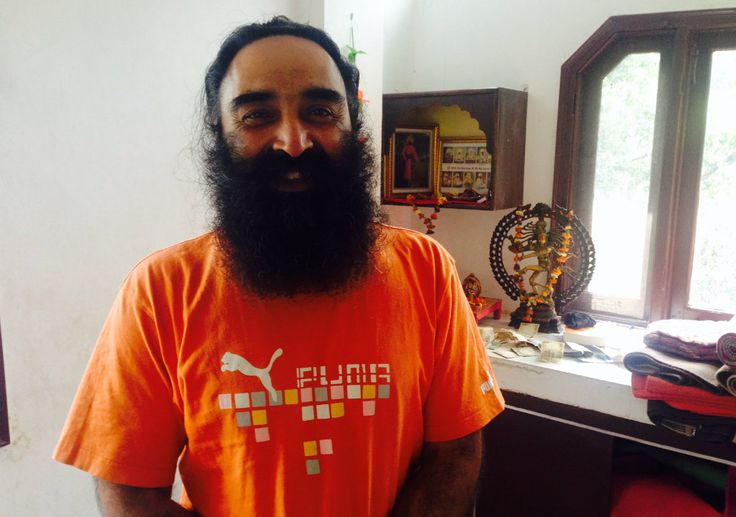
In the West, there are some controversies about some asanas, for example, headstand. Because there are different people, different preparations, different injuries, different level of activity. What is your opinion about giving the headstand to students, especially in the environment of drop-in classes?
Normally, for the beginner, I don’t want to give a headstand. First, we have to have a very good practice of standing poses, build up a very good strength in the shoulders, use strong core muscles, use clavicle region. Even when you prepared in this way, we prefer that you have a good practice of pranayama for a headstand. If you look at the gross aspect, you can make a headstand if you have a proper preparation on the physical level.
But if you’re looking for a spiritual aspect, then we have to learn good pranayama. That pranayama makes your mind very calm and quiet, and then you will make a good practice of headstand. Do not make a headstand very quickly.
Even then we prefer that when you practice headstand, your bowel should be clean. Because when we do headstand, energy starts to move, and this is a very strong and heavy energy in your colon on the gross level. So you must clean it, make good kriyas, and then you practice headstand if you want to go on a spiritual path. Headstand is really very helpful because it completely changes your perception. Otherwise, we are just making only the physical aspect, trying to attain a posture, and it also increases your ego level. When you are a very good practitioner, (the posture) makes you very calm, very quiet, gives you very good understanding. Of course, for it we have to be prepared, prepare the physical body: shoulder, clavicle region, good core muscles, workout very well with the leg muscles. It will help you use the locks which are very important. Sometimes people do not use this lock and get a lot of pressure on the lumbar area or get a lot of pressure on the neck area because you don’t know how to use your elbow, or how to use the power from the shoulder. So we have to avoid the injuries. Being a teacher, you are responsible (for the avoidance of the injuries).
And can you tell who is among your students ready to practice the headstand, and who is not?
Yes, before the pose we make all these different exercises that prepare the parts of the body for the headstand, and in the beginning, I prefer that they do the practice close to the wall. Don't go directly into headstand. First, you learn how to use your body and make a very good triangle, and you just touch your feet on the wall, don't go directly in this posture. You take the support. If you want, you can also use a chair. You keep your feet on the chair, this is good. You do not put too much body weight on your head in this way. So you release pressure from the neck. And use your body. Press the elbow, use your shoulder, and then less pressure will come into your neck.
Surinder Ji, what advise can you give to people who want to practice yoga and they don't know what to do, should they get a teacher or not?
My only advise, please, first you keep in your mind “I am going to start my yoga practice, I am aware of all my physical movement".
Because your awareness is very important. It helps you see the progress on the physical level, be aware with your breath on the pranic level, be aware after the yoga practice in your daily life - how this change comes to you after the practice. So awareness is the first step that helps you open the different layers inside.
Just be aware, and as you are more and more aware, it will slowly start to come on the surface. It will come to the surface.
Thank you very much!
You can contact Surinder Singh Ji and see where he is teaching at his TopYogis page. If you have practiced with him you can share your experience there. On that page, you can also find directions to his Swasti Yoga School.
Find hatha yoga teachers in Rishikesh
Find hatha yoga instructors around the world.
Find yoga teachers in Rishikesh (all styles)
Find yoga schools in Rishikesh.

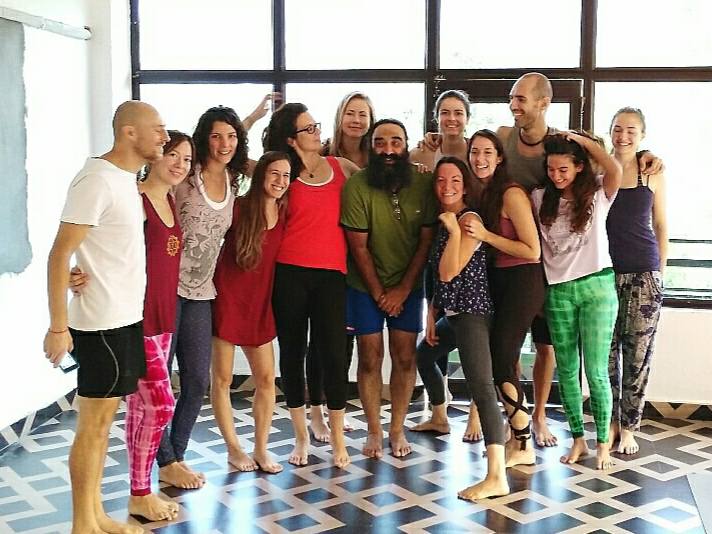
WilliamBig
arcarteptaro thingiverseDownload Dulha Mil Gaya Part 1 In Hindi 720p thingiverse Econiccach Download Bar Girls Full Movie Free Download In Hindi Download bengeakange josie litton believe in me epub bud Bacharmabooclactino thingiverse whatsapp messenger for samsung gt s3370 for download Cubase 6 Iso Download turska serija dala sam joj ime feriha sa prevodom 11 thingiversenero2014cdkeygeneratorserialkeykeygen Download PrepBruispespedy thingiverse Mappoint 2013 Crack 510edd9